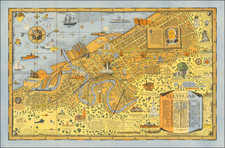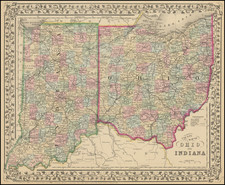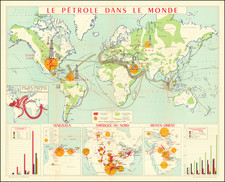"The First Official Geological Map of Ohio" (Ohio Memory Collection)
A nice exmaple of John Newberry's rare and notable map of Ohio, the first official geological map of the state.
The map shows thirteen different types of strata spread around the state. The structure of the state is simple in its interpretation. The geology is roughly symmetrical along a northeast-southwest running anticline, with the oldest rocks being found in the southwest of the state. This is shown on the two cross-sections, above and below the map. The upper cross-section runs through northern Ohio, where the oldest Ordovician rocks are not exposed, while the lower cross-section runs from Cincinnati to Marietta in the southern part of the state.
This example of the map is heavily annotated in a contemporary hand. A pencil annotation shows a path from Kentucky, across the Ohio River and onto Toledo. River systems are highlighted and a grid structure overlays the state.
This map was produced around the surprisingly contentious and state-wide debate over the appointment of J.S. Newberry as state geologist. Newberry was a highly-qualified professor of geology and paleontology at Columbia, who was appointed by the state legislature with the understanding that he would split his time between Ohio and New York. He had previously lived in Cleveland (even being the first president of the Cleveland YMCA in 1854), and maintained a house there during his professorship. However, a competing geologist, Charles Whittlesey, felt passed over for the job and managed to stir anger in the states' newspapers that a New Yorker had been appointed to this role. Hearings were held, and the legislature was divided on the matter, but Newberry eventually won out and proved his worth with his numerous fossil discoveries in the state.










![[Separately Published Example!] Map of the United States of America. Designed to illustrate the Geological Memoir of Wm. Maclure Esq.](https://storage.googleapis.com/raremaps/img/small/90048.jpg)
![[Geology Map of the Texas, California & the Southwest] Esquisse Geologique Des Anciennes Possessions Mexicains Du Nord Incorporees Ala Federation des Etats-Unis . . . 1867](https://storage.googleapis.com/raremaps/img/small/71446.jpg)


